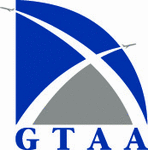New report from the Innovation Economy Council highlights how the airport is using innovation to guide response to next phase of pandemic
TORONTO, Nov. 9, 2022 /CNW/ - A new report from the Innovation Economy Council titled "From Gateways to Sentinels: How airports can use detection to control infection," is shining a light on the impact Toronto Pearson is having on the future of pandemic response.
Throughout the COVID-19 pandemic, travel restrictions were a prominent measure used by governments to curb the spread of the virus. Two and a half years later, infectious disease experts, data specialists and others agree that there are some less impactful approaches that can be used and still deliver the needed protections.
The report highlights the role global airports are playing in early detection of new variants through Artificial Intelligence-driven early warnings, wastewater surveillance and more. Airports are no longer just gateways for travel but are valuable sources of vast amounts of data for public health policymakers to help make decisions. Toronto Pearson is embracing its position as Canada's busiest airport to lead the way with innovations that can help shape the next stages of the pandemic.
Two wastewater surveillance programs have been initiated at the airport. First in January 2022, with the Public Health Agency of Canada and Public Health Ontario, and now through a pilot project funded by the National Research Council of Canada and the Industrial Research Assistance Program.
This pilot project collects sewage samples from Terminals 1 and 3, as well as from a triturator reservoir that contains the combined wastewater of all planes that land at Pearson. Access to this unique sample of wastewater can help experts look for new strains of COVID-19, identifying it earlier than with traditional PCR testing.
Pearson is also supporting efforts to curb the spread of COVID-19 through other innovative technology such as Spotlight-19© from ISBRG, a Toronto-based data analytics company. The device — currently under Health Canada review —is designed to detect COVID-19 infection using a special light that scans a fingertip and takes less than a minute to perform. Should testing be brought back in as part of pandemic response measures, this would be a non-invasive and inexpensive way to screen large numbers of people at airports and other large venues.
To mark the release of the report, a virtual panel discussion of experts will be held today between 12 p.m. and 1 p.m. The discussion is open to the public.
The Greater Toronto Airports Authority is the operator of Toronto – Lester B. Pearson International Airport, Canada's largest airport and a vital connector of people, businesses and goods. Toronto Pearson has been named "Best Large Airport in North America serving more than 40 million passengers" for five years in a row by Airports Council International (ACI), the global trade representative of the world's airports. In recognition of its Healthy Airport program, ACI has also awarded Toronto Pearson the "Best hygiene measures in North America" award for two years running, and Toronto Pearson was the first Canadian airport to receive ACI's global health accreditation for its response to COVID-19.
For more information, please visit Toronto Pearson on Twitter (English and French), Facebook or Instagram.
SOURCE Greater Toronto Airports Authority

GTAA Media Office | [email protected] | (416) 776-3709

Share this article